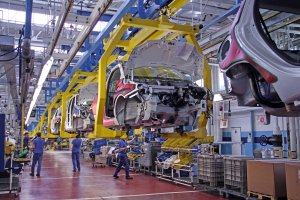In less than three decades Mexico’s automotive industry has gone from a minor role to the 7th largest world producer of automotive vehicles. The Mexican experience is part of the more general case of the “integrated peripheries.” The development of these cannot be accounted for separately from the developments occurring in its core country. Unlike the core-periphery literature, however, our analysis emphasizes that the various clusters of cores and integrated peripheries are not alike. In the case under study, the core has been systematically lagging behind the main transformations pioneered by its competitors.
The paper traces the evolution of the Mexican automotive industry, emphasizing the difficulties faced by a late-comer country in developing an independent industry, and the importance of policy choices as well as the macroeconomic context in affecting its development. NAFTA represents the culmination of an integration process that has profoundly transformed the structure of the Mexican automotive industry, deepening its dependence on the US market. While there is no doubt that it has contributed to the spectacular growth of the Mexican auto industry, whether it also increased its resilience or, rather, its dependence is still an open question. This issue is particularly relevant in view of the transformations that are taking place in the automotive sector and in the geopolitical scenario. These include the end of NAFTA and the advent of USMCA, the entry of powerful competitors into the global market, and the transition to electric and autonomous vehicles, which all entail risks and opportunities. The lens of the centre-periphery relationship can help to understand the present integration of North America and its future direction.




